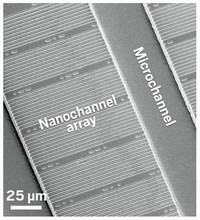Advertisement
Grab your lab coat. Let's get started
Welcome!
Welcome!
Create an account below to get 6 C&EN articles per month, receive newsletters and more - all free.
It seems this is your first time logging in online. Please enter the following information to continue.
As an ACS member you automatically get access to this site. All we need is few more details to create your reading experience.
Not you? Sign in with a different account.
Not you? Sign in with a different account.
ERROR 1
ERROR 1
ERROR 2
ERROR 2
ERROR 2
ERROR 2
ERROR 2
Password and Confirm password must match.
If you have an ACS member number, please enter it here so we can link this account to your membership. (optional)
ERROR 2
ACS values your privacy. By submitting your information, you are gaining access to C&EN and subscribing to our weekly newsletter. We use the information you provide to make your reading experience better, and we will never sell your data to third party members.
Analytical Chemistry
Sensor Detects Bacteria Dead Or Alive
Miniature diving-board-like device indicates whether a bacterial strain is antibiotic-resistant within an hour
by Lauren K. Wolf
July 8, 2013
| A version of this story appeared in
Volume 91, Issue 27
To determine whether a particular bacterial species is resistant to an antibiotic, scientists try to grow the microbe in the medicine’s presence. For a slow-growing bacterium such as Mycobacterium tuberculosis, a doctor who sends a sample off to the lab might wait days or weeks for an answer. A team led by Giovanni Dietler, Sandor Kasas, and Giovanni Longo of ETH Lausanne, hopes to speed things up with a simple nanomechanical sensor that can distinguish between live and dead pathogens within an hour (Nat. Nanotechnol. 2013, DOI: 10.1038/nnano.2013.120). The device uses an atomic force microscope’s cantilever, which is a tiny diving-board-like probe. When the silicon nitride cantilever has bacteria such asEscherichia colistuck to it, the device’s low-frequency oscillations (< 1 kHz) increase in amplitude. The scientists believe this increase results from the microbes’ metabolic activity. When the team flows the antibiotic ampicillin over cantilever-bound E. coli, the amplitude of the device’s oscillations decreases 20-fold in about five minutes, indicating bacterial death, the researchers say. For ampicillin-resistant E. coli, however, the oscillations dampen initially but then recover within 15–20 minutes.



Join the conversation
Contact the reporter
Submit a Letter to the Editor for publication
Engage with us on Twitter